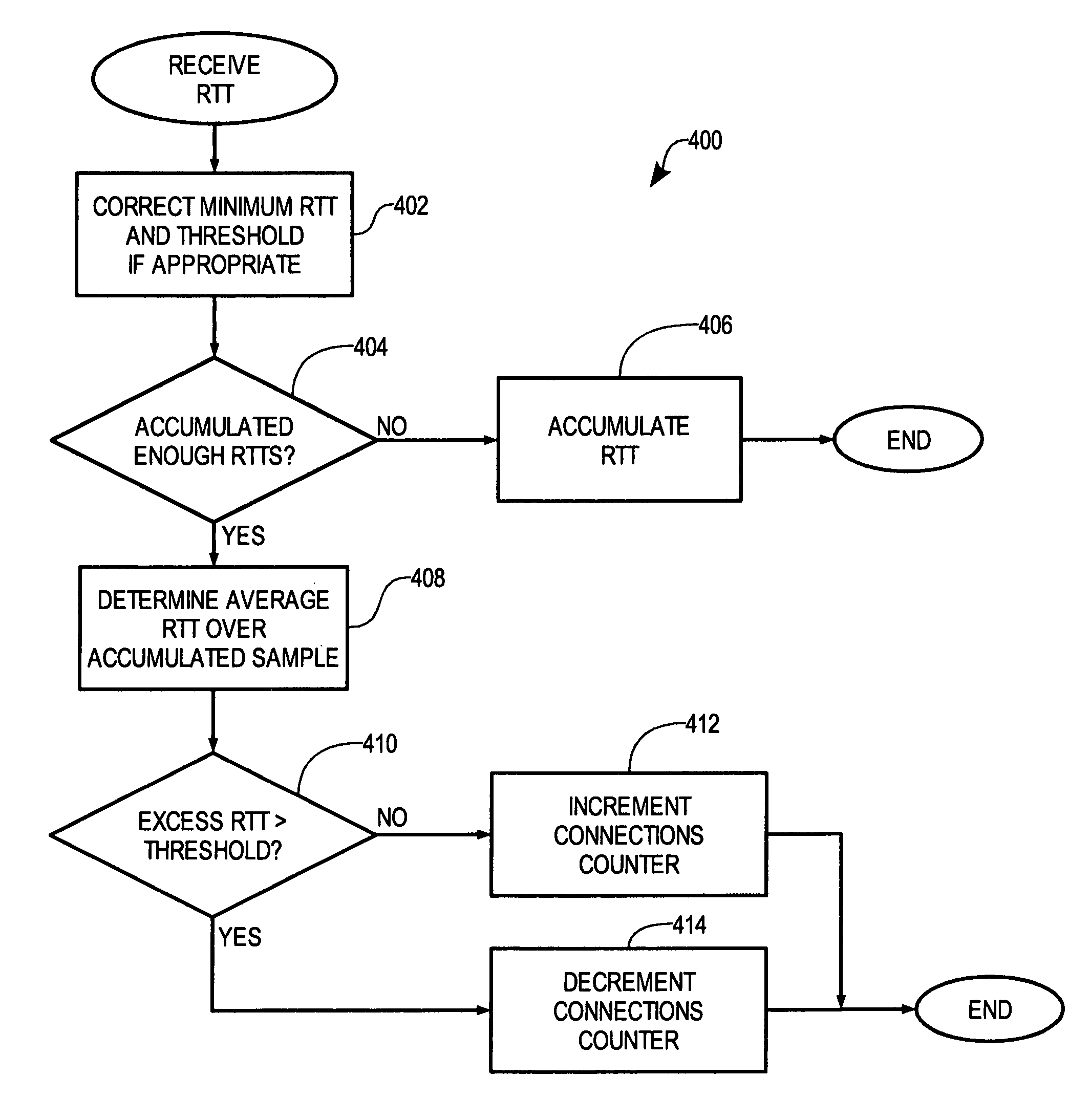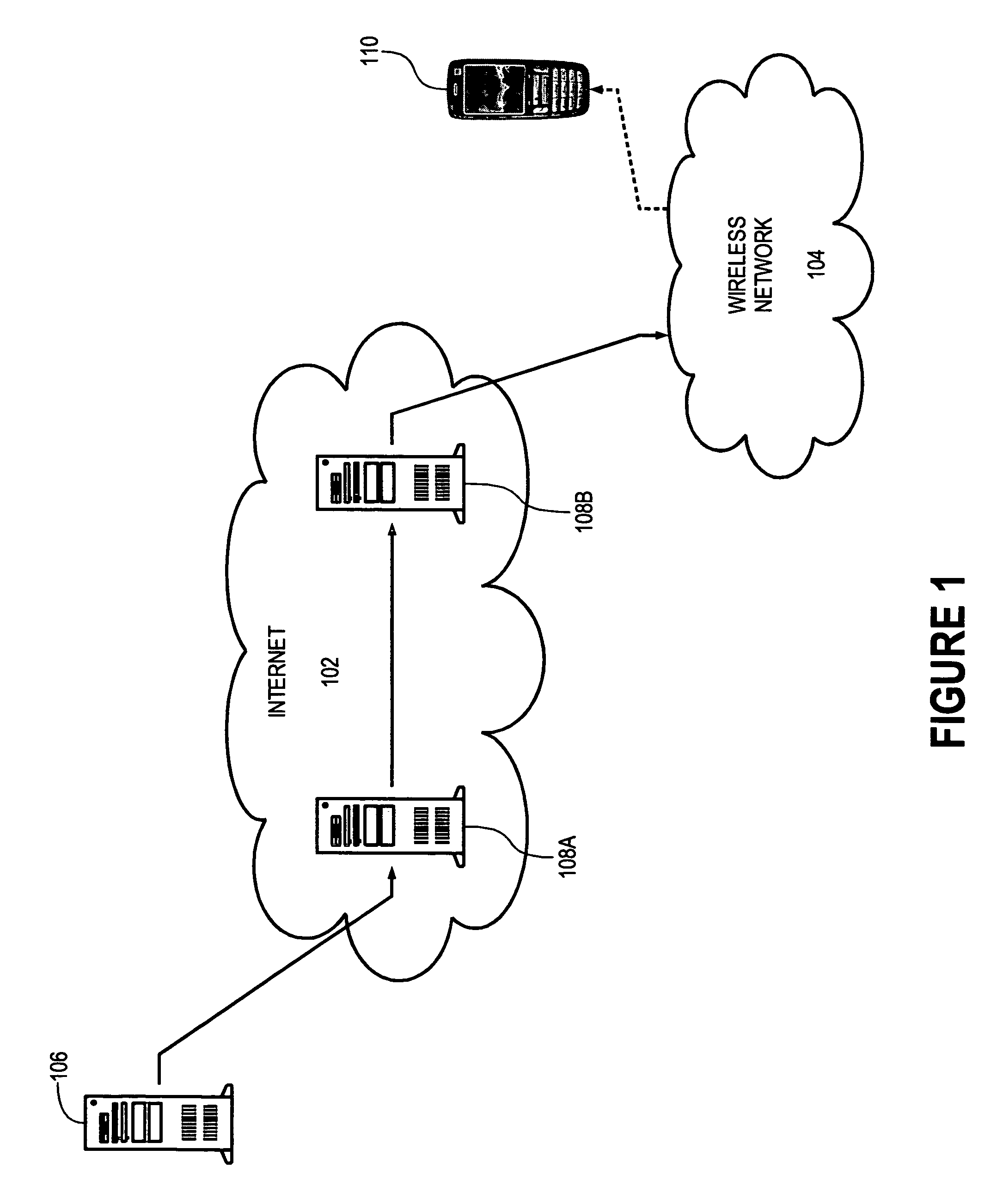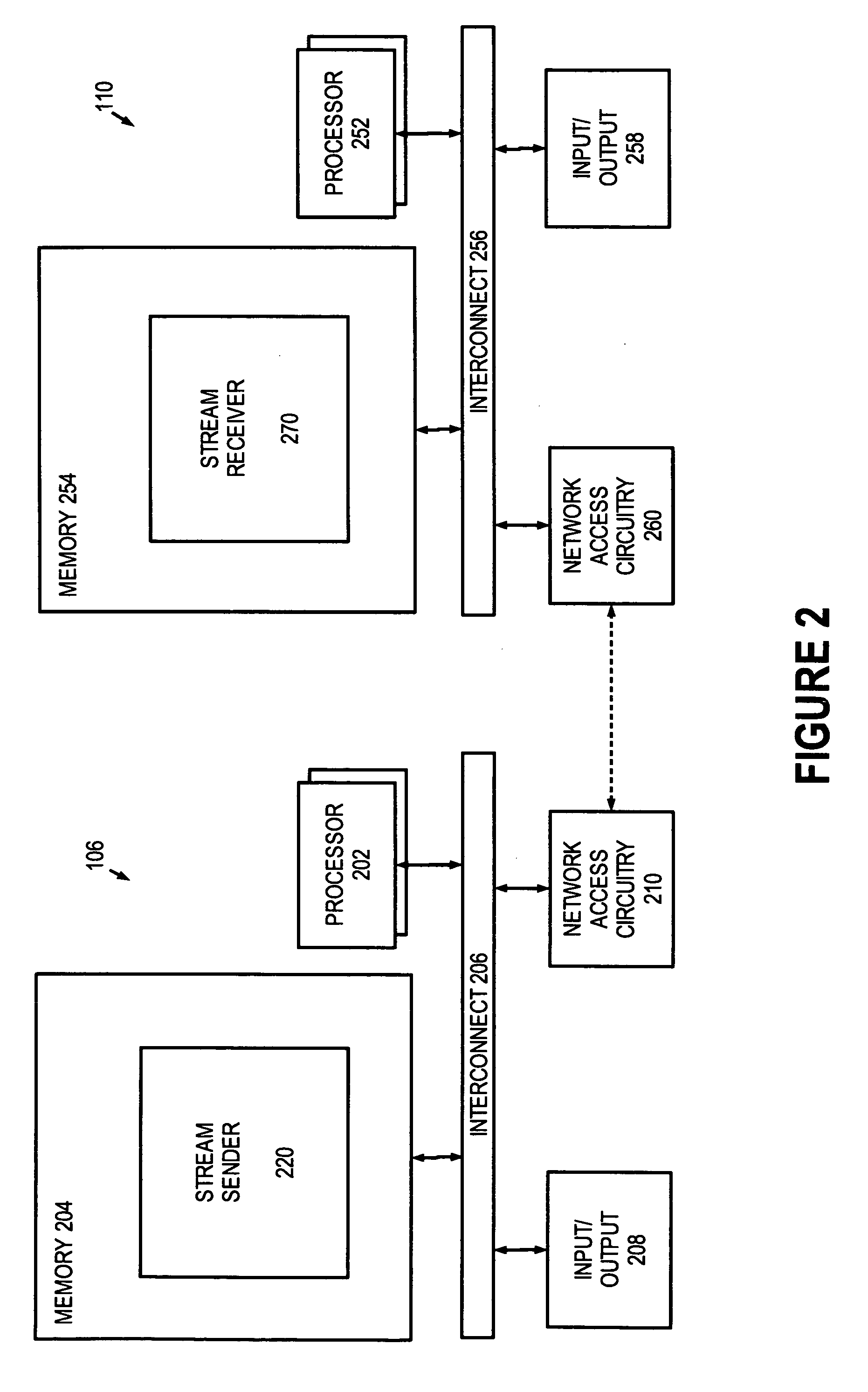Optimization of streaming data throughput in unreliable networks
a network and data throughput technology, applied in data switching networks, frequency-division multiplexes, instruments, etc., can solve problems such as difficult rate control, packet loss in wireless channels, and packet loss, and achieve the effect of improving throughput and increasing the packet loss ra
- Summary
- Abstract
- Description
- Claims
- Application Information
AI Technical Summary
Benefits of technology
Problems solved by technology
Method used
Image
Examples
Embodiment Construction
[0024]In accordance with the present invention, the data rate of one or more TRFC connections transporting streaming data through a wireless channel is increased, and changes in performance of the TFRC connections is evaluated to detect full utilization of the available bandwidth of the connections. In particular, the data rate increases until performance decreases so much as to indicate network congestion and not intermittent packet losses due to network errors. Once network congestion is detected, the data rate is decreased to avoid exceeding the available bandwidth. The result is that the data rate converges at about the total available bandwidth of the one or more connections without exceeding the available bandwidth for particularly long periods of time.
[0025]In one embodiment, the data rate of the one or more TFRC connections is adjusted by adjusting the number of TFRC connections, and the difference between measured round trip times of packets and minimum round trip time is u...
PUM
 Login to View More
Login to View More Abstract
Description
Claims
Application Information
 Login to View More
Login to View More - R&D
- Intellectual Property
- Life Sciences
- Materials
- Tech Scout
- Unparalleled Data Quality
- Higher Quality Content
- 60% Fewer Hallucinations
Browse by: Latest US Patents, China's latest patents, Technical Efficacy Thesaurus, Application Domain, Technology Topic, Popular Technical Reports.
© 2025 PatSnap. All rights reserved.Legal|Privacy policy|Modern Slavery Act Transparency Statement|Sitemap|About US| Contact US: help@patsnap.com



